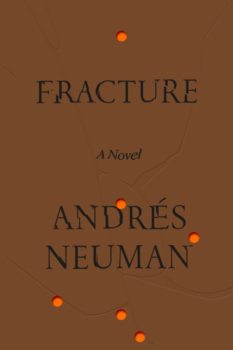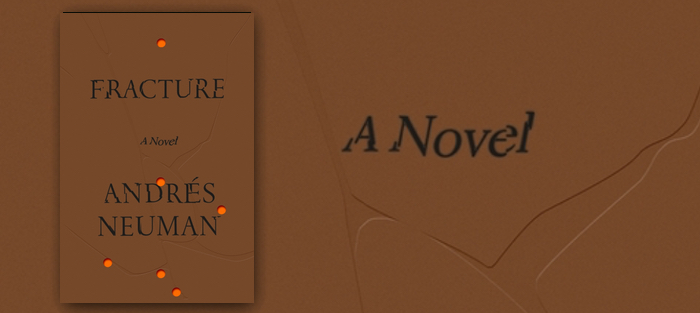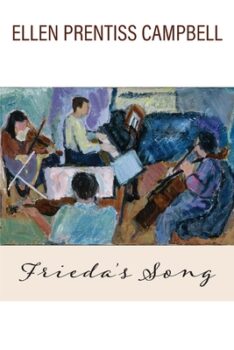Andrés Neuman has authored almost twenty books since his first collection of poetry appeared in 1999, and garnered international recognition along the way, including selection in 2010 by Granta as one of the best young Spanish Language novelists. Now with Farrar, Straus, and Giroux’s recent release of Fracture (originally published in Spain in 2018 and translated by Nick Caistor and Lorenza Garcia), three of his novels, a collection of his stories, and a travelogue have been published in English. Born in Argentina, the author and his family moved to Spain when he was ten. In an interview with The American Reader, Neuman said that as a young boy transplanted from Argentina to Spain, he initially felt he “didn’t belong anywhere.” The circumstances “gave [him] two national educations and also made [him] lose national certainties forever,” so that as a writer he has a “sense of strangeness towards geography, towards the space in which you’re telling a story, towards the origins of the characters.” Questions of personal, national, and historical identity, as well as the ways in which experience, memory, communication, and relationships are affected by history, nationality, language, and dislocation, all reverberate through Fracture as the novel chronicles the arc of international businessman Yoshie Watanabe’s life journey from his childhood in Japan, to his work abroad, to his retirement and return to his home country.
The origin story of ten-year-old Yoshie begins with the boy witnessing his father’s death in the 1945 atomic blast in Hiroshima, surviving only to return home to Nagasaki to discover he has lost his mother and sister to the subsequent bombing. Raised by his aunt and uncle in Tokyo, he would leave Japan for university in Paris, and spend his entire professional career abroad, becoming an executive for a Japanese telecommunication firm, working in the States, Argentina, and Spain before retiring to Tokyo.
 The 2011 Fukushima nuclear disaster has just occurred as the novel opens. Watanabe weathers the subsequent earthquake and initial aftershocks in a Tokyo subway station. The “earthquake fractures the present, shatters perspective, shifts memory plates” and prompts him to journey north, toward Fukushima’s dangerous, forbidden zone of ground zero, into the forbidden zone of his own memories of his life, his family, and the bombs.
The 2011 Fukushima nuclear disaster has just occurred as the novel opens. Watanabe weathers the subsequent earthquake and initial aftershocks in a Tokyo subway station. The “earthquake fractures the present, shatters perspective, shifts memory plates” and prompts him to journey north, toward Fukushima’s dangerous, forbidden zone of ground zero, into the forbidden zone of his own memories of his life, his family, and the bombs.
The novel is narrated as an episodic composite, linked by the author’s narrative conceit: a persistent Argentinian journalist has been seeking to interview elusive, reclusive Watanabe. The journalist has much more successfully contacted the four women, in four countries, who loved Watanabe over the years and stages of his career. Each woman recounts her story, her version of Watanabe, speaking in the first person to the unseen, hovering journalist. Each woman has come close enough to Watanabe to see the embossed web of scars he keeps hidden on his back from the blast in Hiroshima, to partially glimpse his emotional damage. Each relationship is different, in part shaped by and reflecting the four different national and temporal contexts: Paris with Violet, New York with Lorrie, Buenos Aires with Mariela, and Spain with Carmen. Each woman, in her way, muses and comments upon the role language and culture play in the challenging pursuit of understanding one another—particularly in translation.
Neuman’s deeply researched, ambitious novel stretches and uses the life-as-journey structure to explore the characters’ inner spaces, and their personal and political history. At times, the density and volume of the references, observations, and meditations can be challenging—like a tapestry where the viewer gets lost in the richly detailed background. However, reader sensibility, interest, and frame of reference may influence whether the extensive information illuminates or distracts. As the old expression goes, “the book reads the reader.” For this reader, Watanabe’s fascination with kintsugi, and Neuman’s explanation of the Japanese art of mending broken porcelain with golden glue, highlighting the cracks and fractures, resonated as a fitting extended metaphor.
Watanabe himself remains somewhat of a cipher for the reader as for his lovers and the journalist. But the final pages— simple, pared down—bring the reader closer to the elusive Watanabe as he journeys north toward Fukushima’s ground zero, along fractured roads, stopping in almost deserted towns:
Everything has the look of a house that’s for sale. Lowered blinds, parched flowerpots. Dried mud on the benches, fountains no longer running. Squares visited only by the cats and dogs that run over to lick his shoes. Buses with seats draped in white fabric, transporting ghosts. Closed temples. Idle offices, bureaucracies that have finally achieved perfection.
These concluding reflective passages are reminiscent of British writer Alan Booth’s meditative observations on Japan. Booth came to Japan to study Noh drama in 1970, and remained until his death in 1994. Fluent in Japanese, he became an English language commentator on the art, politics, and history of his adopted home. Like Yoshie Watanabe, like Andrés Neuman, he was an inside outsider, or an outside insider. Booth walked alone the entire length of Japan from north to south, chronicling his journey in The Roads to Sata (1985). His final work, published posthumously, Looking for the Lost: Journeys Through A Vanishing Japan (1995), recounts his last solo pilgrimage by foot along what he poignantly calls “Ghost Roads.”
It’s easy to visualize Booth and Watanabe enjoying a beer together in a lonely ryokan. But Booth is gone, and his books are shelved with travel, and Neuman’s Fracture will be found in fiction. However, perhaps both Booth’s work and Fracture truly belong on a separate shelf, reserved for books which defy categories.






